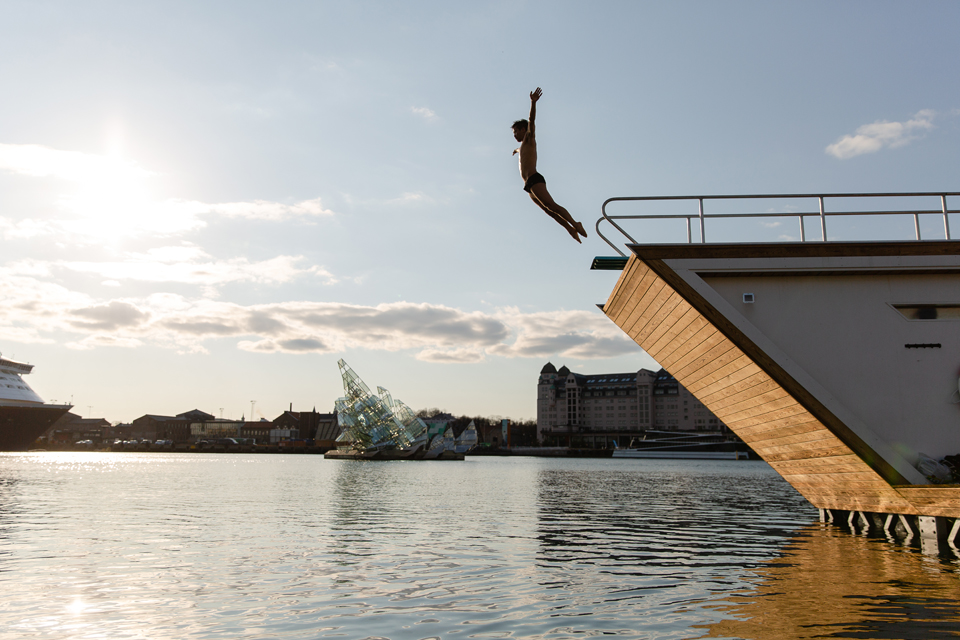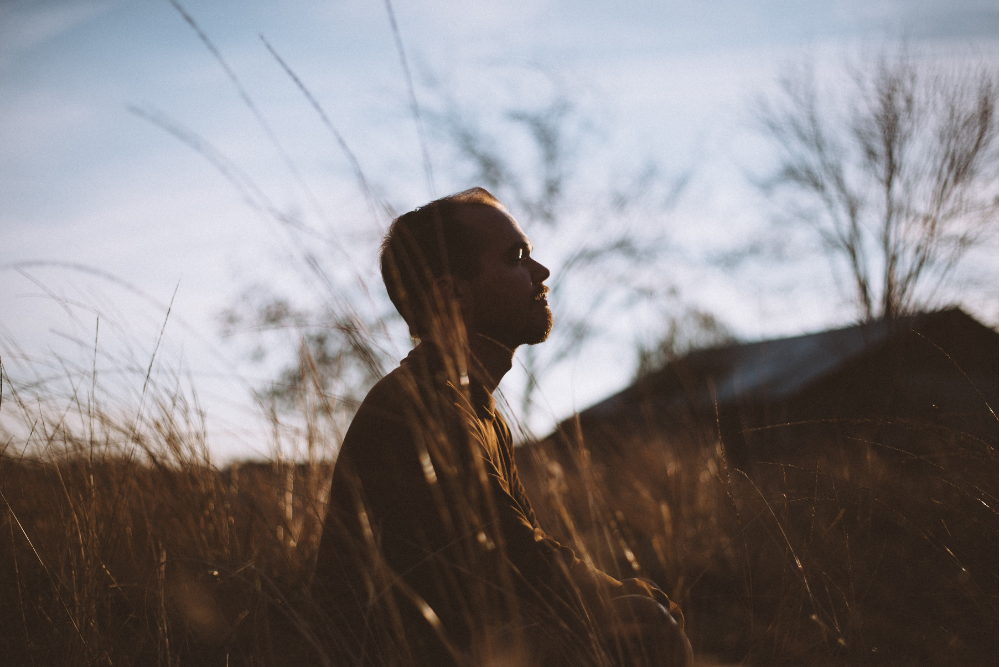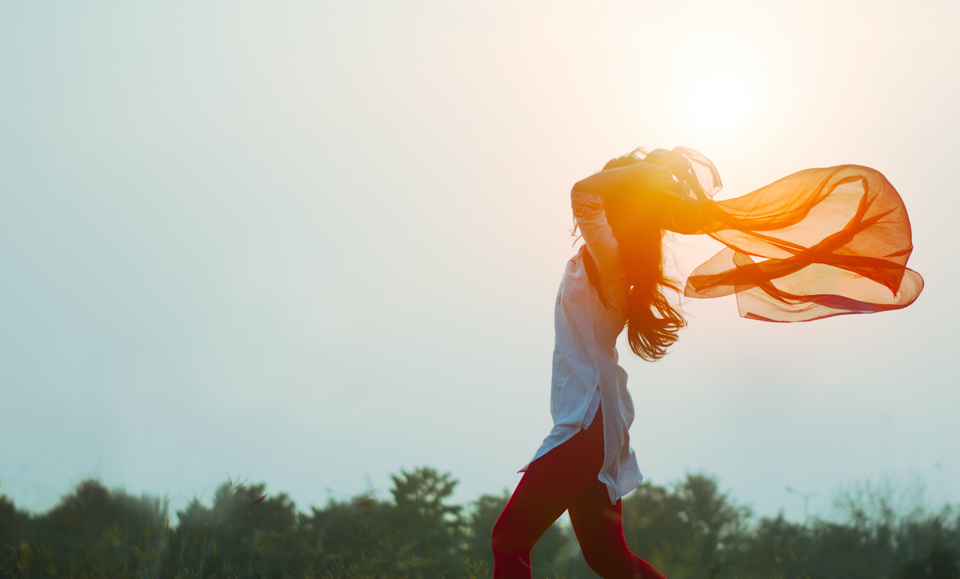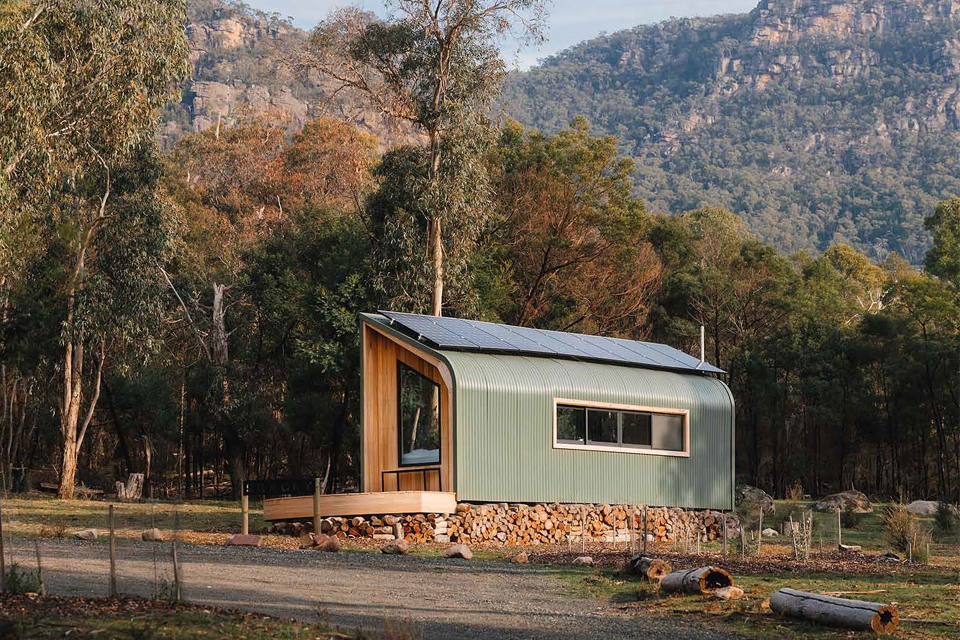We dive into some Nordic urban bathing wisdom for everyday wellbeing.
It’s a late summer’s night and the Nordic sun is gently hovering above the horizon. I’ve just immersed myself in an urban foraging and dining adventure with Norway-based Food Studio but my host, Cecilie, still has a surprise up her sleeve. “We’re going to sauna. Would you like to come?” Having no idea what’s in store, I promptly respond, “Why not?!” In transformational travel circles, this is what they describe as a “call to adventure”: that moment when you take a leap of faith and step out into the unknown. You might have a thousand nervous butterflies flying around in your tummy but, deep down, you know that you’re on the right path.
An hour later, I find myself stepping out of a tiny floating sauna on Oslo’s harbour — dripping with sweat — and ready to plunge into freezing cold seawater. All the while, I’m surrounded by the backdrop of Oslo’s Opera House and city skyline. Incredible, right?! From that point on, I’ve been hooked on urban bathing culture. So, in June 2019 (two years after my earlier trip) and with midsummer fast approaching, I found myself again in Oslo’s harbour. In the interim, Oslo City had continued its efforts to clean up Akerselva, the main river that flows into the harbour, and now there is an explosion of sauna projects. Let me pause here, though, and add a little context.
Global bathing trail
At the time of my first visit, I was working on the Overland Track in the Tasmanian Wilderness World Heritage Area, taking every opportunity I could to swim in the pristine alpine lakes dotted along the trail. In January 2018, I returned home to Victoria and took on the role of wellness manager at Peninsula Hot Springs. You can see a thread, right? I have a thing for indulging in the healing benefits of water. Through another leap of faith, I received a travelling scholarship via the Victorian Tourism Industry Council to research benchmarks for a future hot springs and bathing trail.
OK, back to the Nordic region… Beginning in Icelandic hot springs, I bath-hopped to the saunas of Finland, the floating saunas and forests of Norway, the beaches and lakes of Sweden and the harbour baths of Denmark. On my radar were wellbeing tools that I could bring back to Australia. Funnily enough, I wasn’t hearing people talk about cult yoga studios, superfood trends or fitness movements. I was seeing people immersing themselves in the outdoors every day through the simple acts of walking or riding their bike to work, sitting outdoors enjoying the sun with friends or enjoying fresh local produce cooked in their home kitchen. One quote from a lady called Oddny resonates: “In Iceland, people don’t go to the pub on a Friday night, they go to the hot pot. It doesn’t matter whether it’s raining or snowing.” (Note: “hot pots” are small geothermal mineral pools that typically sit alongside all of Reykjavik’s swimming pools.) Could it be so simple that community life connected to the outdoors is the proverbial “end of the rainbow” that many of us can’t quite reach? Somehow, we’re caught chasing short-term trends instead.
I’m no expert but from my research into urban cultures across the Nordic region, England, China, Japan and Australia, living with a close connection to water makes life better. Not only does bathing cleanse and purify the body and mind, it reminds us of our interdependent relationship with aquatic and marine ecosystems. Yuin Nation Elder Uncle Max “Dulumunmun” Harrison eloquently shares, “We drink the same water, we bathe in the same water, all cultures walk the same land and breathe the same air. Water links all cultures.”
When sauna masters run Fire & Ice Experiences at Peninsula Hot Springs, they always focus on three key benefits of contrast bathing. Here, I’ll use the example of Nordic-style saunas. Firstly, moving between hot and cold temperatures is excellent for circulation and blood flow. This can allow the body to speed up its healing processes, hence why sportspeople use it in post-exercise recovery. Secondly, experiencing extreme cold (whether through a 4°C ice plunge as at the hot springs or jumping into a frozen ice lake in Finland) sends the body into shock — but in a good way. It’s like a restart button for your system that leaves you feeling refreshed and energised. Finally, stepping out of a piping-hot sauna and into a city harbour is brilliant for your mental health; learning to become comfortably uncomfortable and practising slow, deep breathing is a tool you can use in any stressful experience in life.
Urban bathing in the Far North
Oslo floating saunas
Oslo Sauna Raft was the first floating sauna in the Norwegian capital’s harbour. Founder Hans Jørgen Hamre describes it as a pirate sauna and was motivated by a desire to reclaim the water as a public space. It was made by hand, entirely of recycled materials. The latest Oslo Fjord Sauna is much more refined, boasting a glass wall with panoramic views out to the Opera House. Kok Oslo and SALT are two other beautiful bathing facilities close by.
W: visitoslo.com
Copenhagen harbour baths
Designed by Danish architect Bjarke Ingels, Islands Brygge was the first addition to Copenhagen’s harbour bath trail. There are currently nine official swimming locations and you can spend a whole day (or weekend) cycling between them. Japanese architect Kengo Kuma is now working on a project called Water Culture House, which will set a new global benchmark for urban bathing developments.
W: visitcopenhagen.com
Helsinki saunas
Löyly represents the vanguard of Finnish sauna culture. Sitting on the industrial edges of Helsinki, the project has been used by the city council as a trigger for urban regeneration. Walking and cycling trails, public transport links and exercise equipment establish the public sauna and restaurant complex as a holistic community wellbeing destination. Allas Sea Pool is another great urban bathing project.
W: myhelsinki.fi
Well, all of this is fine if you can swim in your urban waterways, but what if they’re too polluted? Just like the communities and city councils of Copenhagen, Oslo and Helsinki, we have the opportunity to improve our stormwater systems so that they become swimmable again. My bets are that Australia is at the beginning of a new cultural bathing movement. Time to start scoping out your neighbourhood’s future urban bathing spot.
Sauna culture in Australia
Mornington Peninsula
Peninsula Hot Springs is the heart of Australia’s contemporary bathing culture. Located an hour’s drive from Melbourne on the Mornington Peninsula, there are no surprises why this world-class wellbeing destination was a winner in the 2019 World Luxury Spa Awards. Pitched as “affordable luxury” by co-founder Charles Davidson, its one-hour Fire & Ice Experience is the closest thing to experiencing Nordic bathing culture in Australia.
W: peninsulahotsprings.com
Great Ocean Road
Deep Blue Hot Springs along Victoria’s Great Ocean Road offers infrared sauna experiences matched with colour therapy. Add a self-guided forest bathing session at The Redwoods in the Otway Ranges along with a visit to the Lorne Sea Baths to complete your wellness experience.
W: thedeepblue.com.au
Words MATT SKYES
Want to learn more about being moved? Visit our moved archive.




